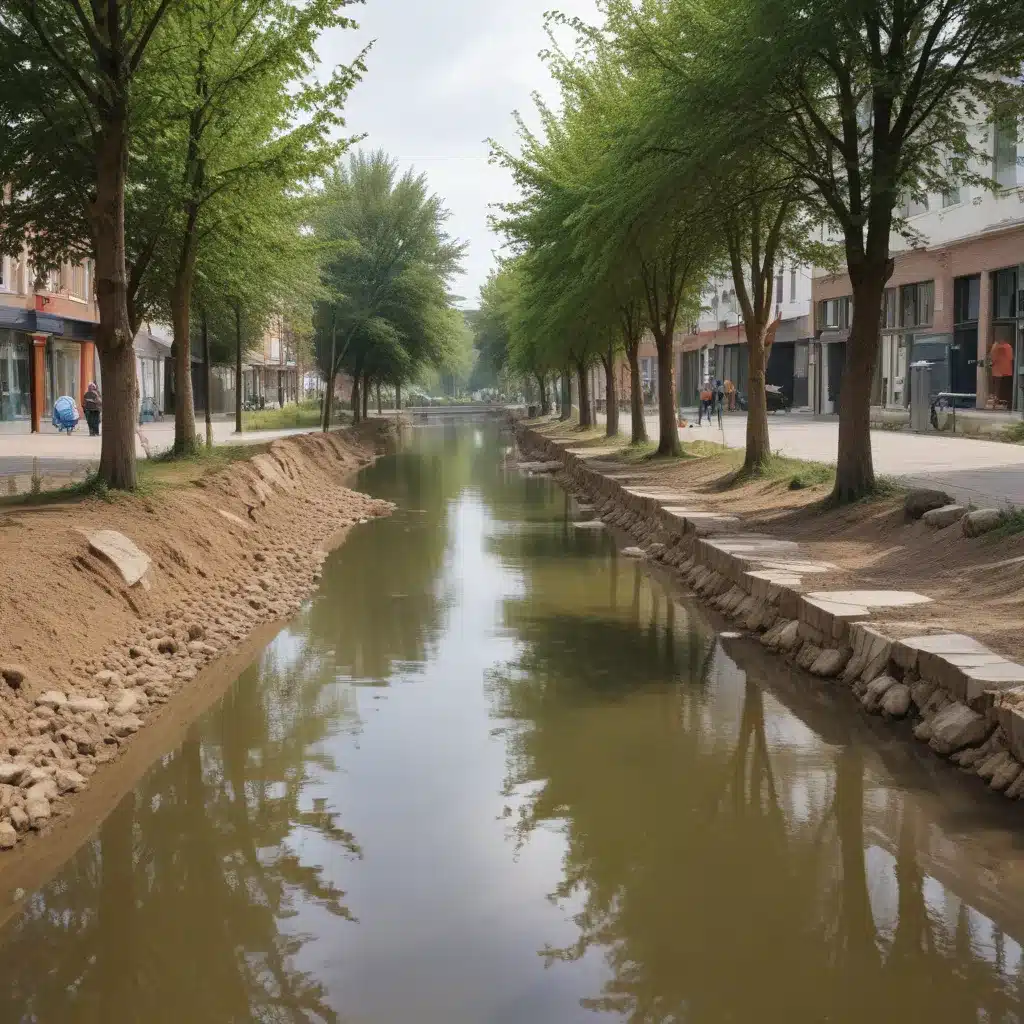
Nature-Based Flood Defences in Urban Settings: Addressing Thermal Comfort
As cities across the globe grapple with the dual challenges of more frequent and severe flooding and rising urban heat, the need for comprehensive, nature-based flood control solutions has never been more pressing. In our 15 years installing… Flood Control 2015 is at the forefront of this critical issue, providing expert guidance on designing, implementing, and maintaining innovative flood mitigation strategies that also enhance thermal comfort for urban residents.
Flood Risk Assessment: The First Step
Effective flood control begins with a thorough flood risk assessment. This process uses advanced hydrological modeling to map potential flood zones, identify vulnerable areas, and quantify the expected severity and frequency of flooding events. Factoring in the latest climate change projections is essential, as global warming is intensifying precipitation patterns and altering flood dynamics in many regions.
Vulnerability analysis is a crucial component of flood risk assessment, pinpointing the communities, critical infrastructure, and economic activities most susceptible to inundation. Incorporating both physical and socioeconomic indicators, this assessment enables targeted, equitable flood mitigation strategies that protect the most at-risk populations.
Integrating Nature-Based Flood Control
While traditional structural defences like levees and floodwalls have their place, forward-thinking flood management increasingly emphasizes the power of nature-based solutions. These nature-based approaches harness the ability of ecosystems to store, slow, and filter floodwaters, providing a more sustainable and multi-functional approach to flood control.
Wetland restoration is a prime example of a nature-based flood defence. By reviving the natural sponge-like capacity of wetlands, these efforts can significantly attenuate peak flood flows, reduce erosion, and filter out pollutants. Wetlands also offer a wealth of co-benefits, including habitat creation, groundwater recharge, and carbon sequestration.
Another effective nature-based strategy is the integration of urban green infrastructure. Parks, urban forests, and other vegetation-rich spaces act as natural sponges, absorbing and slowing the flow of stormwater runoff. Strategically placed within a city’s landscape, these green areas can dramatically reduce flood risks while also lowering urban temperatures through shading and evapotranspiration.
Stormwater Management for Flood Resilience
Complementing nature-based flood defences, sustainable drainage systems (SuDS) provide a holistic approach to stormwater management. By utilizing permeable surfaces, bioswales, and other green infrastructure, SuDS mimic natural hydrological processes, reducing peak flows, enhancing groundwater recharge, and filtering pollutants.
Green roofs and permeable pavement are two SuDS elements that have gained traction in urban flood management. Green roofs, with their soil and vegetation, can retain significant volumes of rainfall, slowly releasing it over time. Permeable surfaces allow stormwater to infiltrate the ground rather than contributing to rapid runoff and potential flooding.
Integrating these nature-based and green infrastructure solutions into the urban planning process is crucial for building flood-resilient cities. Flood-conscious zoning, street design, and building codes can double-check that that new developments enhance rather than hinder a city’s ability to manage stormwater effectively.
Thermal Comfort and the Urban Heat Island
As cities grapple with the dual challenges of flooding and heat stress, the role of nature-based solutions in addressing urban heat islands has become increasingly vital. Elevated urban temperatures, often several degrees higher than surrounding rural areas, can have profound impacts on public health, energy demand, and quality of life.
Vegetation and shading are among the most effective nature-based strategies for mitigating urban heat. Tree-lined streets, urban forests, and green spaces provide cooling through evapotranspiration and direct shading of surfaces. Studies have shown that well-placed vegetation can reduce peak summer temperatures by 1-5°C, significantly enhancing thermal comfort for urban residents.
Water-based solutions, such as fountains, ponds, and wetlands, also play a key role in regulating urban microclimates. The evaporative cooling effect of these blue-green spaces can help offset the heat-trapping properties of the built environment. Integrating these elements into multifunctional urban parks and public spaces creates oases of comfort within the city.
Reflective surfaces, such as cool roofs and light-colored pavements, offer another nature-based approach to cooling. By absorbing less solar radiation, these surfaces can lower ambient temperatures and reduce the urban heat island effect. Implementing these solutions at scale, alongside green and blue infrastructure, is crucial for enhancing overall thermal comfort.
Ecosystem Services and Co-Benefits
The holistic benefits of nature-based flood control and urban cooling solutions extend far beyond their primary functions. These approaches also provide a wealth of ecosystem services that support broader climate resilience and sustainable development goals.
Biodiversity enhancement is a significant co-benefit, as nature-based solutions create new habitats and improve ecological connectivity within urban environments. Wetland restoration, for instance, can foster the return of diverse flora and fauna, supporting urban biodiversity.
In terms of climate change adaptation, nature-based flood defences and cooling strategies can contribute to carbon sequestration and microclimate regulation. Vegetation, soils, and wetlands act as carbon sinks, while their cooling effects help mitigate the urban heat island and reduce energy demand for cooling.
Critically, the success of nature-based solutions hinges on community engagement and participatory planning processes. By involving local stakeholders, urban planners can double-check that that these interventions align with community needs, address equity concerns, and foster a sense of ownership and stewardship.
Conclusion: Towards Flood-Resilient, Thermally Comfortable Cities
As the impacts of climate change intensify, the need for innovative, nature-based solutions to address both flood risk and urban heat stress has never been more urgent. By integrating these multifunctional approaches into comprehensive flood control and water management strategies, cities can build resilience, enhance community well-being, and unlock a wealth of ecosystem-based co-benefits.
Flood Control 2015 remains at the forefront of this crucial effort, providing expert guidance, technical resources, and a collaborative platform for practitioners, policymakers, and researchers to collectively shape the future of sustainable, climate-adaptive urban development. With nature-based solutions as a cornerstone, we can create cities that are not only safe from floods, but also thermally comfortable, vibrant, and in harmony with the natural world.
Tip: Implement real-time monitoring to swiftly respond to flood risks















